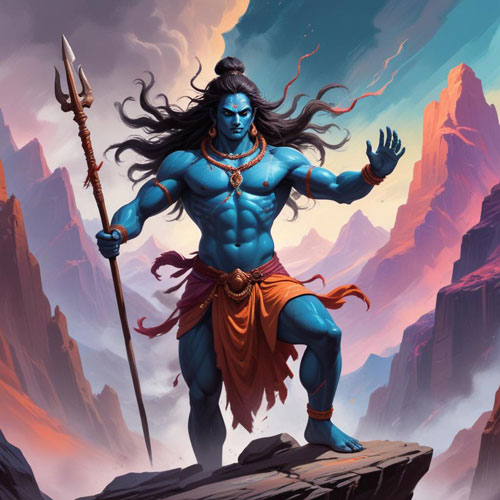 Change Language:
Change Language:

Sati, the daughter of Daksha, the powerful son of Brahma, holds a significant place in Hindu mythology. Her story is one of passionate love, defiance, and ultimately, self-sacrifice, leaving an enduring mark on the legend of Shiva, the god of destruction and transformation.
Sati grew up captivated by the stories and qualities of Lord Shiva, an ascetic god known for his yogic powers and detachment from worldly matters. Unlike many who saw Shiva as aloof, Sati recognized his profound wisdom and deep compassion. Their love blossomed, defying societal expectations. Daksha, however, held a different view. He saw himself as superior to Shiva and considered him an unsuitable match for his beloved daughter. When Sati expressed her desire to marry Shiva, Daksha vehemently refused.
Unwilling to let societal pressure dictate their destiny, Sati and Shiva chose to marry without Daksha's consent. This act of defiance created a rift between Daksha and his daughter, but their love remained strong.
One day, Daksha organized a grand yajna (fire sacrifice) ceremony. However, in a deliberate snub, he neglected to invite Shiva, despite inviting all the other gods. Sati, deeply hurt by this exclusion, decided to attend the ceremony nonetheless. Hoping to reconcile with her father, she arrived at the event despite Shiva's reservations. However, the situation took a turn for the worse. Daksha, filled with resentment towards Shiva, publicly insulted him in front of the gathered deities.
Sati, unable to bear the humiliation of her beloved husband, was consumed by grief and anger. In a tragic act of defiance and unwavering devotion, she chose to end her own life. Right there, amidst the opulent ceremony, Sati leapt into the sacrificial fire and perished.
News of Sati's self-immolation reached Shiva, triggering a surge of immense grief and rage. Engulfed by emotions, he embarked on the destructive Tandava dance, threatening to tear apart the very fabric of the universe. Fearing complete annihilation, Brahma, the creator god, intervened. He pleaded with Shiva to calm his fury, acknowledging the injustice done to him and Sati.

Shiva, moved by Brahma's pleas, eventually relented. However, as a mark of his anger towards Daksha's arrogance, he cursed him to bear the head of a goat. Sati's story doesn't end with her death. Legend has it that she was later reborn as Parvati, another embodiment of the divine feminine, destined to reunite with Shiva and become his consort once again.
Sati's story serves as a powerful testament to the strength of love and devotion. Her willingness to sacrifice herself for Shiva highlights the profound connection they shared. While the practice of Sati (widow self-immolation) is no longer condoned, her legend continues to be a part of Hindu mythology, reminding us of the enduring power of love and the transformative nature of sacrifice.

Try out the other sections